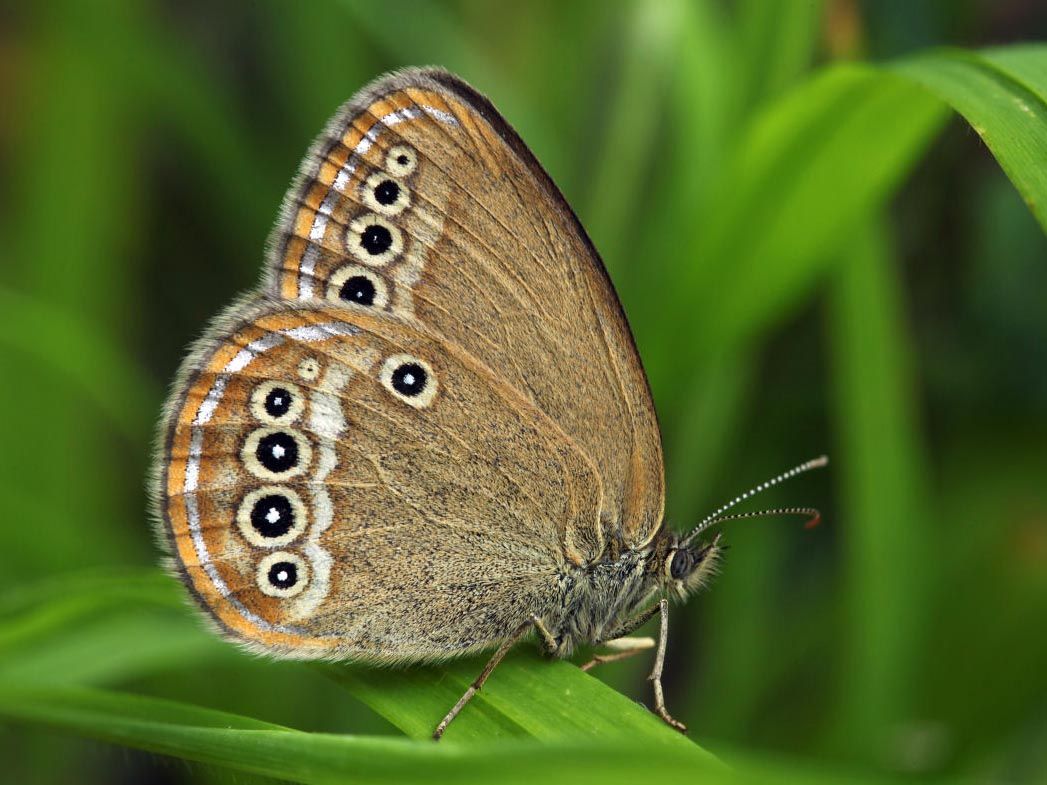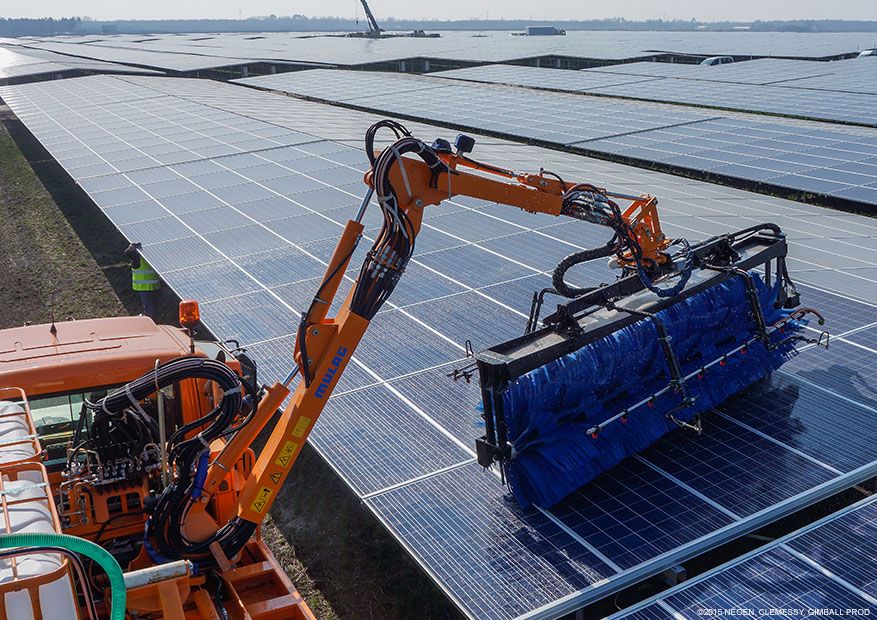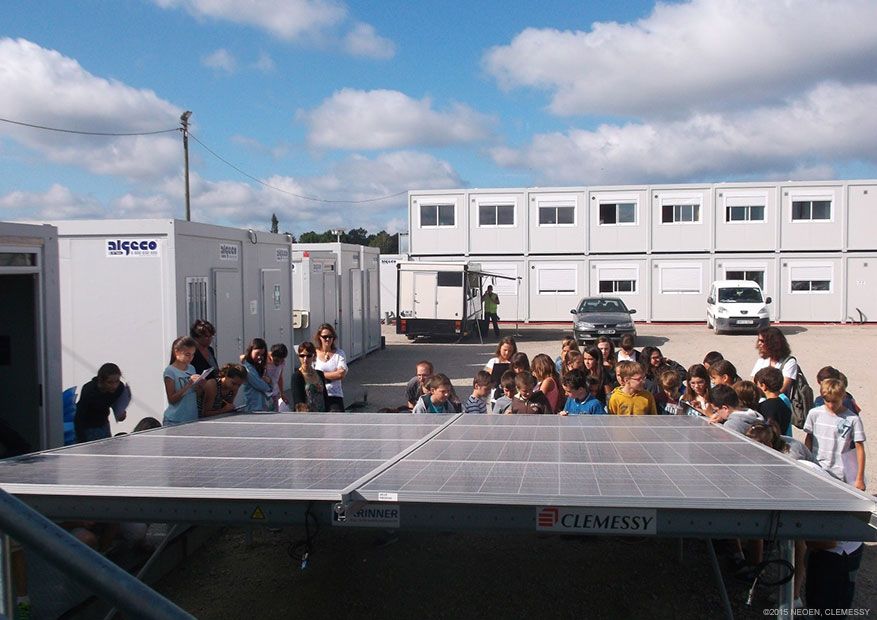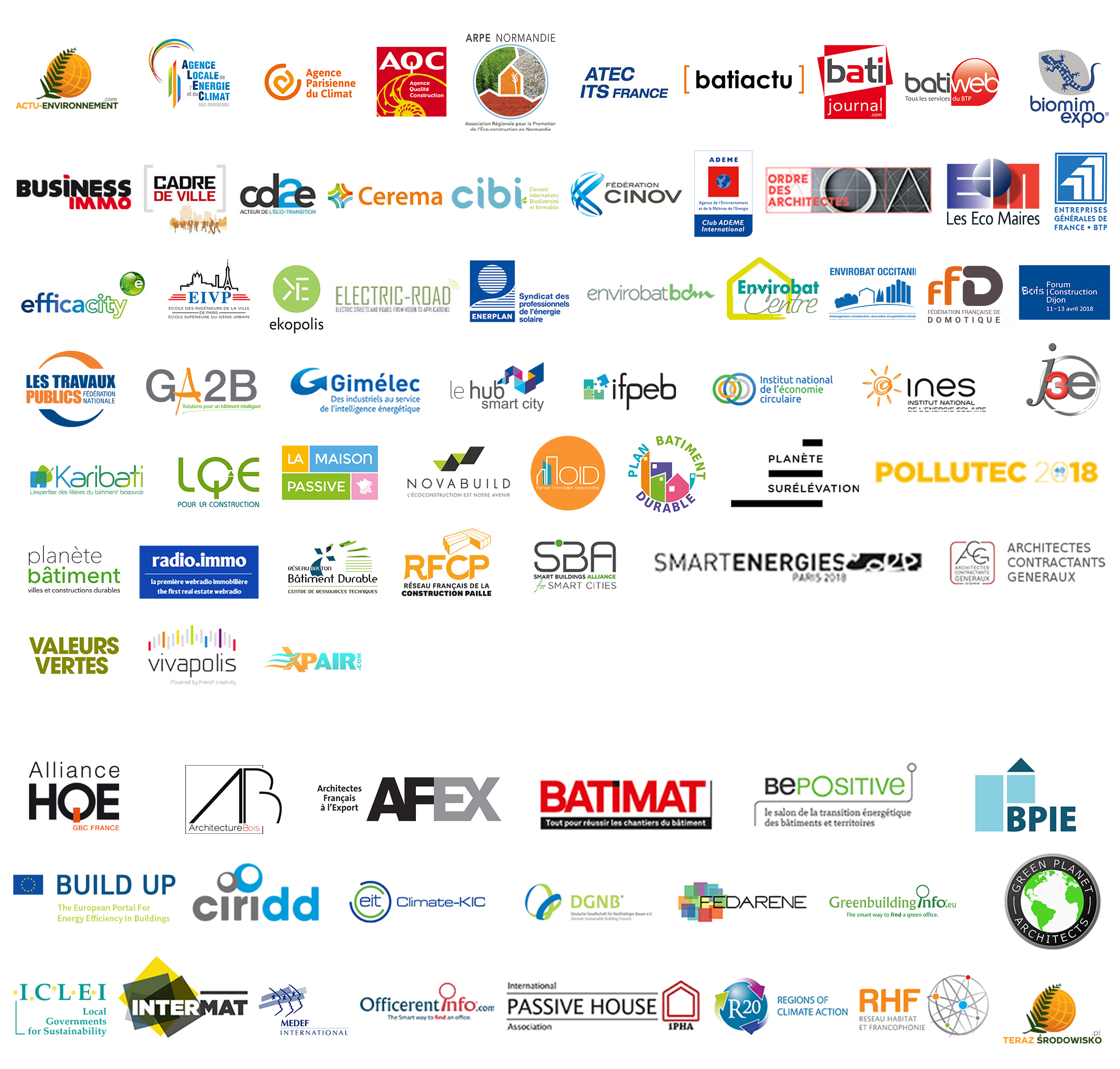"With the Green Solutions Awards, Eiffage has shown that Cestas is much more than a photovoltaic power plant", Dena Villanueva, Eiffage
Nadège Rigaudeau

In 2017, Eiffage participated in the Green Solutions Awards, an international competition for sustainable solutions organized each year by Construction21. Awarded the French User's choice, Cestas is one of Europe's best-performing photovoltaic plants. For Dena Villanueva, Eiffage Group Sustainable Development and Innovation Officer, the competition highlighted the company's sustainable development approach from design to end-of-life, beyond energy performance. Discover this extraordinary project!
Can you tell us about your career and Eiffage’s commitment to renewable energy ?
As an architect, I joined the Eiffage group in 2009 through the Energy division within an in-house research department dedicated to renewable energies; where I specialized in this field and more specifically in photovoltaics. I then naturally turned to environmental management around a low carbon 360 ° strategy in the Sustainable Development and Transverse Innovation Department of Eiffage, where I currently lead the support of our sustainable city projects.
The Eiffage Group is at the cutting edge in the fields of wind power, geothermal energy (partner of the Geodeep research and development program), and biomass. Eiffage, through its international subsidiaries such as Eiffage Energía, is one of the leading "EPC" [Engineering, Procurement and Construction] companies in the field of wind and photovoltaic farms with a stake in more than 80 wind and solar power plants. 3500 MW installed, more than 60 photovoltaic plants and more than 1,100 MW installed worldwide.
How was the photovoltaic power station project in Cestas born and what are its main characteristics?
The Cestas photovoltaic power station is located near Bordeaux (South West France) and covers an area of more than 250 hectares. Built between 2014 and 2015, it is composed of 25 units (ie 25 mini-power stations) of 12 MWp (Megawatt peak) to accumulate a power of 300 MWp (Megawatt peak), directly connected to the network of very high voltage. By producing more than 350 gigawatts per hour, the power station meets the consumption needs of 116,700 households, or about 280,000 inhabitants (which equals the average energy consumption of a city like Bordeaux).
The park produces three times more electricity per hectare than most other plants built in France and Europe, showing the photovoltaic capacity to integrate with the best efficiency possible in the territories with increasingly competitive prices (electricity sold € 105 / MWh, for a project worth € 285 million). The orientation of the East / West panels largely contributed to the optimization of the soil as well as the cutting of the 250 ha in 25 SPV also allowed to minimize the land cost of this project.
Led by a consortium of industries (Eiffage via its subsidiary Clemessy, Schneider Electric and Krinner), the plant is considered one of the largest photovoltaic energy projects in Europe. From design studies, to group management, through the selection and validation processes of modules, the group of companies has set up a real industrial organization for a rigorous and efficient production management: planning, storage management , monitoring of suppliers.

What challenges did you overcome to achieve this project?
Beyond research and energy performance, 2 challenges have been raised to make Cestas one of the most efficient photovoltaic plants in Europe: the organization of a clean and efficient construction site and respect for the environment.
From design studies to group management, through the selection and validation processes of the modules, Clemessy has set up a real industrial organization to meet the challenges of this project. The 983,500 photovoltaic panels that make up the power plant were purchased, tested, routed and installed in 7 months instead of 8 (5,000 panels installed per day!); with a very low case rate of 0.0023%. From the shipping of the panels from China, to their arrival at the port of Bordeaux and their installation, 7500 quality samples were realized in order to ensure a maximum quality of the production. A European design office (CMI), based in China, has been mandated by Clemessy to control manufacturing.
In order to ensure the maximum production of electricity and the shortest construction site possible, a multitude of tips and innovations have been put in place. To pull the 680 km of buried cables, our engineers have invented a specific device to put 5 reels on the same trailer. The installation of the panels, by Krinner company, was carried out using "small trains" designed and manufactured specifically for this project. The performance of this process is widely demonstrated with peaks of 15,500 modules installed per day.
Each photovoltaic panel has an identity card and a bar code that will, in operation and maintenance, locate it in case of problems and trace its entire manufacturing and control process. The grouping and protection boxes also have a bar code. They are, like panels, monitored by thermographic
What was the consortium's approach during the entire project?
The construction site was placed under the sign of sustainable development: the installation of a dump has allowed the collection of recyclable materials: a total of 38,000 tons of wood pallets and 800 tons of cardboard were recycled. Separation of all packaging waste from the panels was implemented from the start of the project.
The sedge fadet, a species of protected butterfly, was present on the site of the plant. The wet moorland of Molinie, its favorite breeding place, has been preserved and 3.35 hectares of land has been developed into wet moorland with the support of ecologists.
Beyond the production of renewable energies, what are the other sustainable development aspects of this project?
The plant has been entirely thought of from conception to end of life. The photovoltaic system consists of three main elements: modules, load-bearing structures and electrical equipment (inverters, junction boxes, etc.). The analysis of the environmental impact of each of these elements has been taken into account for the analysis of the installation's life cycle. Steel bearing structures and electrical elements are easily recyclable. The photovoltaic module, an essential component of the installation, will be recycled via CLEMESSY, a member of the PV Cycle network for the elimination of photovoltaic panels at the end of their life. In the end, the plant allows the reduction of 19,200 tons of CO2 per year.
The plant has also been designed with a goal to preserve natural resources. By facilitating assembly and dismantling at the end of life of the power plant, the support structures of the panels are driven directly into the ground using the foundations to be screwed, without earthwork, without excavation and without concrete. A plan of control and regular maintenance of the vegetation on the ground was put in place: a contract was signed with a local breeder to graze the area.

The areas between the modules are vegetated, which limits the risk of erosion and make the infiltration of water easier at the site in case of heavy rains.
The panels are cleaned with osmosis water. In this water, the minerals are extracted using filters which makes it softer and easier to clean. Specially designed by the project, this cleaning system is more ecological since it doesn't use chemicals; and limits water consumption and drying time.
A special attention was also paid to the surrounding flora and fauna. The planting of trees and bushes along the fences and the creation of grassy areas under the access panels, allowing the landscape integration of the plant as well as the protection of the small fauna of the moors. The first reports of follow-up for the recolonization of the site by the small fauna and by the fadet of the sedges are very promising.
What benefits did you get from participating in the Green Solutions Awards?
The Green Solutions Awards made it possible to bring a high visibility to the project as a whole, beyond its technical and energy performances.
Indeed, the Cestas power station had positive social impacts on the territory. For example, several apprentices and trainees were involved in the project. Important responsibilities have been given to young graduates working alongside experienced professionals.
In order to publicize the project, a showroom was installed near the plant. Schoolchildren and local residents could discover the various sources of energy and understand in a fun way the history and principles of photovoltaic energy. The inhabitants of the surrounding communes were also able to discover the functioning and the characteristics of the project.

Contest organized in partnership with
See the case study associated with this article.




